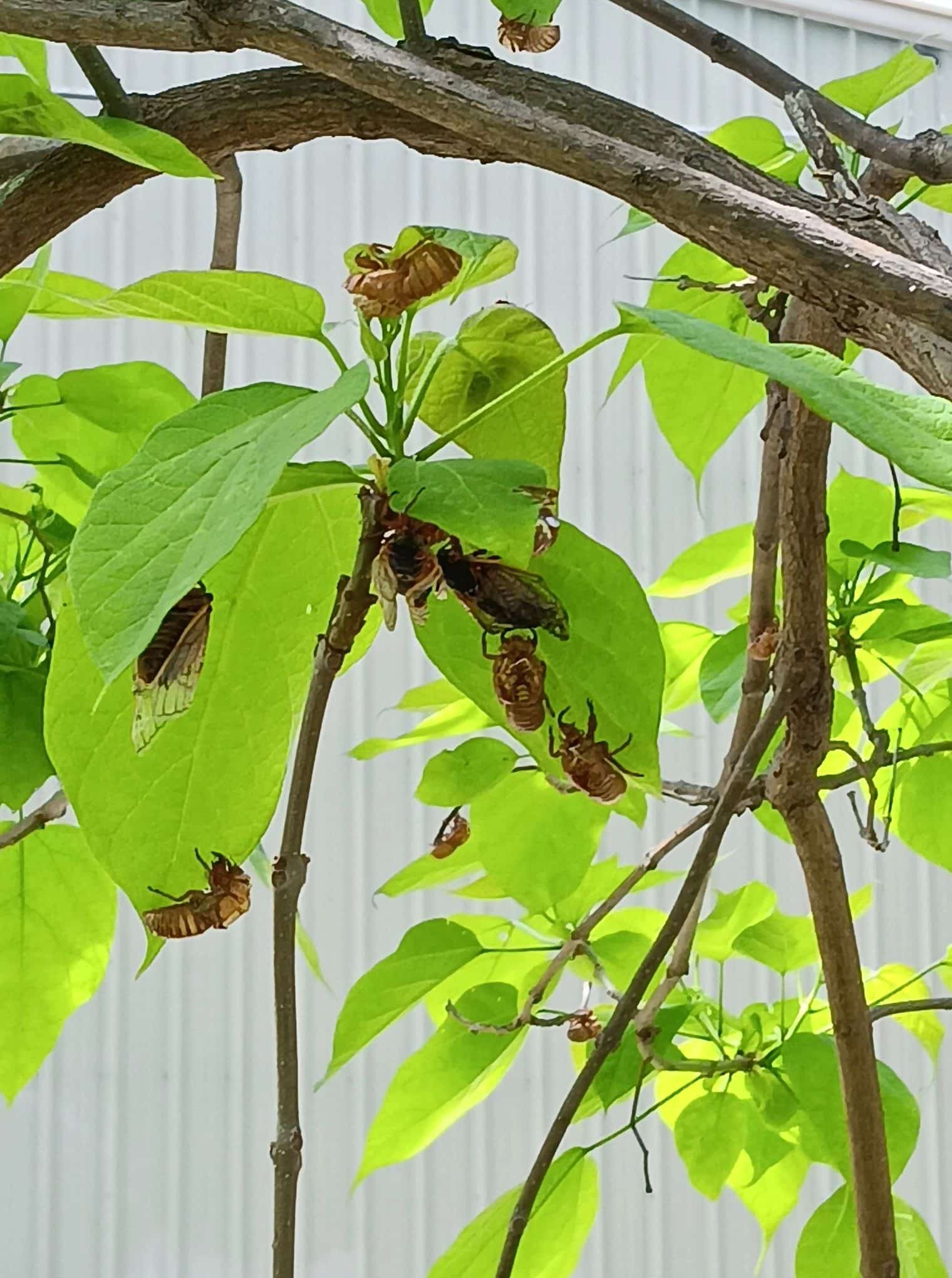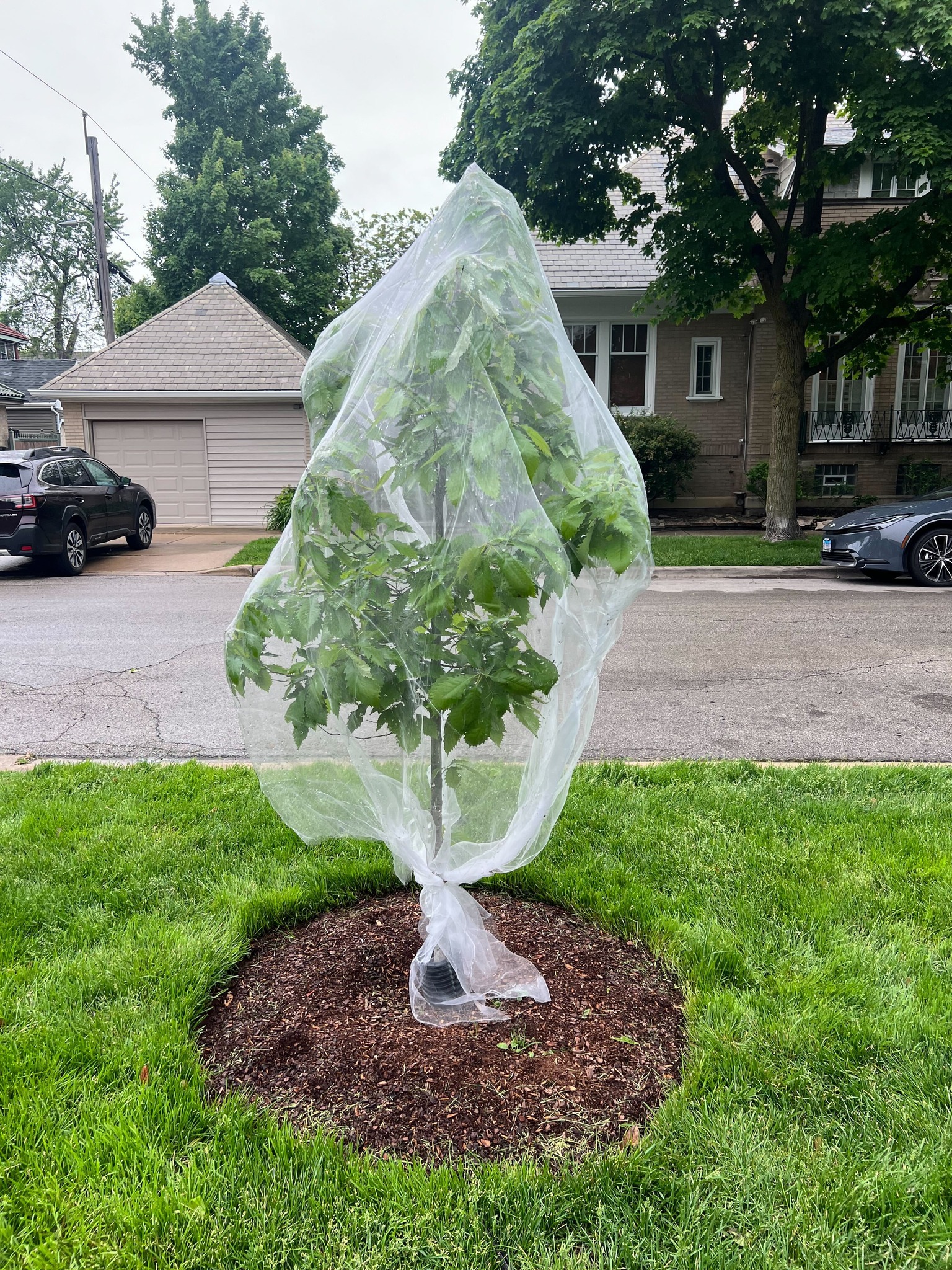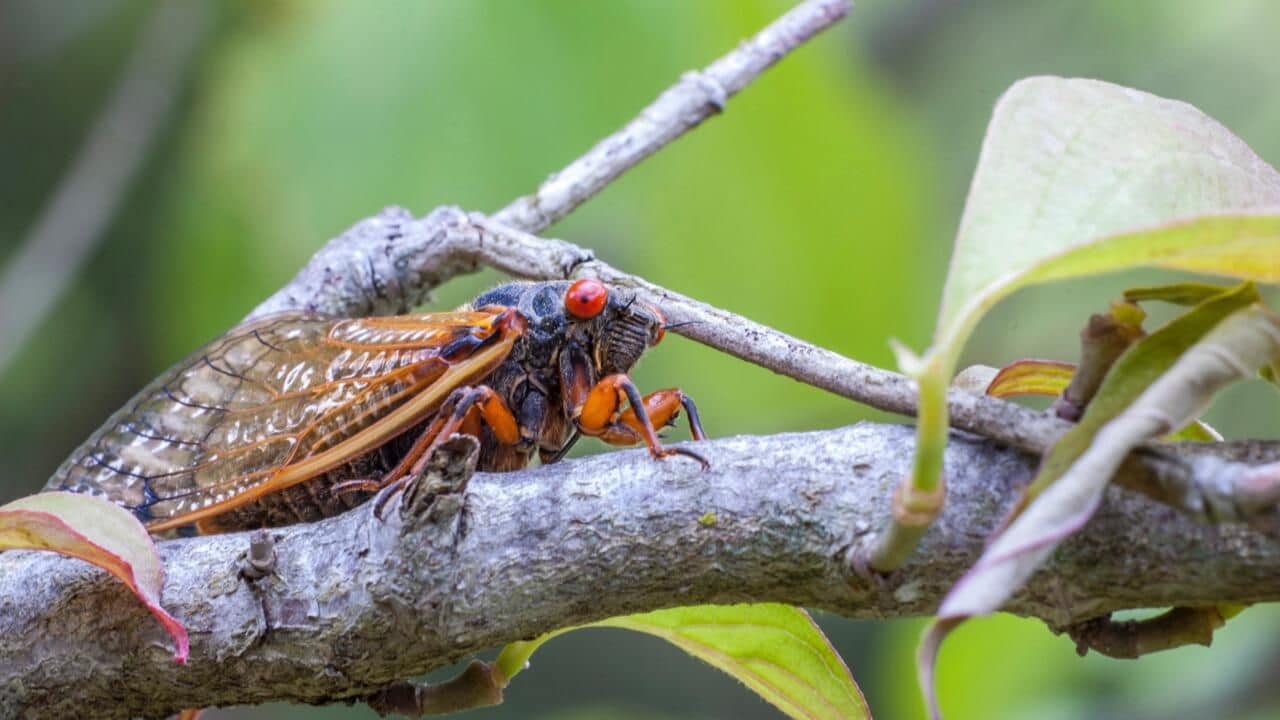As the temperatures rise and the days grow longer as summer arrives, the unmistakable buzz of cicadas fills the air, signaling their arrival. These crunchy, loud insects are generally harmless, but they are inherently a nuisance and gross.
Their presence can become overwhelming, particularly if cicada swarms invade your home. Cicadas can also damage your plants, so eradicating them is imperative.
Various methods exist for controlling and preventing cicadas, which you can effortlessly implement on your own. We’ll explore effective ways to get rid of cicadas in this post and help reclaim your quiet.
9 Ways To Get Rid Of Cicadas
1. Hose Trees Down With Water To Remove Cicadas Instantly
Using a water hose to spray cicadas off plants involves directing a strong stream of water at the insects to dislodge them from foliage. This method is effective for small-scale infestations, providing an immediate and non-toxic way to reduce cicada presence.
Regular spraying can help keep cicadas off plants, preventing damage and deterring egg-laying. Ensure the water pressure is sufficient to remove the cicadas without harming the plants. This technique is best combined with other natural methods for more comprehensive control.
2. Erect Physical Barriers
Protect vulnerable or young plants from cicada damage using physical barriers. The options include:
a) Netting or Mesh
Drape a fine mesh or netting material over vulnerable plants or trees, ensuring it reaches the ground and covers the entire canopy. Secure the material tightly around the plant base or tree trunk to prevent cicadas from accessing the foliage.
b) Tree Bands
Wrap sticky bands or adhesive tape around tree trunks several inches above the ground, making sure it forms a continuous band that traps cicadas attempting to climb up. Wrap every tree you want to protect from cicadas.
Check and replace the sticky bands regularly to maintain their effectiveness, especially after rain or when they become covered with debris.
c) Row Covers
Drape these lightweight, breathable fabrics over susceptible crops or ornamental plants to create a barrier against cicadas in your garden. Secure the row covers edges to the ground with weights or stakes to prevent cicadas from crawling underneath.
d) Floating Row Covers
You can protect plant foliage by suspending floating row covers above the plants using hoops or stakes. Leave enough slack in the fabric to accommodate plant growth while ensuring it remains securely anchored.
e) Foil Wrapping
Food-grade aluminum foil can also help protect your plants from cicadas. Wrap it around large bushes and tree trunks. This will stop cicadas from moving around or laying eggs on the plants.
Note
While you can buy physical barriers, you could also make makeshift barriers with materials readily available at home, such as cheesecloth, burlap, or lightweight fabrics. Fashion these materials into sleeves, bags, or covers to drape over individual branches or plants. Secure the barriers with twine or clips.
Read More: How To Get Rid Of Ants In Garden Without Killing Plants
3. Use Essential Oils
Another way to protect your plants from cicadas is by spraying them with essential oil. The scent will deter cicadas from nestling or feeding on the plants. Essential oils with insect-repelling properties include peppermint oil, citronella oil, eucalyptus oil, lavender oil, and tea tree oil.
Peppermint oil works best; it repels insects, including cicadas, cluster flies, cockroaches, and drain flies. Choose pure, high-quality essential oils to ensure effectiveness and safety.
Gently mix a cup of water with 12 drops of peppermint oil. Apply the oil on a small part of a plant, then leave it for a couple of days, and if there’s no damage, proceed with the extensive application. If the oil is too potent, add more water or switch oils.
Spray the essential oil directly on cicada eggs, adults, and nymphs. Also, apply it to the plants to keep cicadas from eating or landing on them.
4. Prune Plant Twigs and Branches
Remove plant parts with cicada eggs and nymphs to stop them from reaching maturity. Prune plants during the early spring or late fall, before or after the peak cicada activity period. After pruning, discard the branches in the trash or burn them if permitted and if it is safe to do so.
You can inspect your plants before pruning to ensure you only remove the affected parts. Alternatively, approach it blindly to cover every base. This way, you can save time you’d have otherwise spent checking every tree branch.
5. Biological Control
You can let other creatures like parasitoid wasps, birds, predatory insects, fungi, and pathogens handle the cicadas that have invaded your home. Attract them by avoiding broad-spectrum insecticides that could harm parasitoid wasps and other beneficial insects.
In addition, attract insectivorous birds to your property by providing food, water, and shelter through bird feeders, birdbaths, and native plantings. Moreover, create bird-friendly habitats with a diverse array of vegetation, including trees, shrubs, and grasses, around your home to attract a variety of bird species.
You can also apply fungal spores or microbial formulations to cicada-infested areas according to product instructions to target nymphs and adults.
Bird species such as yellow-billed cuckoos, flycatchers, woodpeckers, house sparrows, and mockingbirds are known to feed on cicadas and can help keep their populations in check. Besides birds and predatory insects, other cicada predators include reptiles, fish, arachnids, marsupials, pets, rodents, and people.
6. Spray Insecticides
For a quick and effective approach to cicada control, spray chemical insecticides on plants and outdoor spaces. Ensure the chemical covers foliage, branches, and trunks thoroughly. Use insecticides with carbaryl as an active ingredient.
Apply insecticides when cicadas are most active, typically during the emergence of nymphs or the peak of adult activity. However, use insecticides sparingly and judiciously to minimize impacts on beneficial insects, pollinators, and other non-target organisms.
Also, avoid spraying insecticides near water bodies, storm drains, or sensitive habitats to prevent contamination and adverse effects on aquatic ecosystems.
7. Set Up Cicada Traps
Buy and strategically set up traps designed to capture cicadas. Options include sticky traps, net traps, and container traps. Place traps near trees and shrubs since cicadas tend to lay their eggs on branches.
Many traps come with attractants that mimic the sounds or scents of female cicadas, luring males into the trap. Check the traps regularly to remove captured cicadas and replace attractants if necessary.
Use traps in conjunction with other control methods, such as physical barriers or chemical treatments, to enhance their effectiveness.
8. Cover Hot Tubs and Pools
Humidity and warmth in hot tubs and pools make these areas perfect resting spots for cicadas. Unfortunately, once they land on the water, their wings get wet, and since they cannot swim, they get trapped and die. This may seem like a good thing, but their carcasses can clog the filters and drains.
This is why you should cover your hot tub and pool and promptly remove cicadas if they fall in the water. Use tight-fitting covers.
9. Seal Entry Points
Indoor cicada infestations are rare because these insects prefer feeding, mating, and laying eggs near plants. However, this doesn’t mean your indoor spaces are completely safe from their invasion. They can accidentally enter your house through open windows and doors or existing holes.
For this reason, patch any holes bigger than 0.5 inches in your home’s exterior and interior to keep cicadas out. Also, cover openings around vents, exhaust fans, and utility penetrations with mesh screens or hardware cloth.
10. Conduct Yard Work At Dusk or Dawn
Vibrations from your yard maintenance tools like a leaf blower or lawn mower attract cicadas. The vibrations from these tools are similar to the sounds cicadas make to attract mates. Avoid attracting cicadas by doing yard work at dusk or dawn when these insects are less active.
Also, if possible, use quiet or electric-powered tools instead of loud ones for yard work to minimize noise and disturbance.
11. Plant New Trees After the Cicada Season
Planting new trees during cicada season is a bad idea because young trees are more vulnerable to damage from these insects than mature ones. Therefore, if you intend to add new trees to your home, do so once the cicada season is over or two years prior.
Doing this gives the plants better growing conditions. Plants at risk of cicadas include dogwood, fruit trees, chestnut, oak, maple, ash, and elm.
Final Remarks
The trick to cicada control is adopting the right strategies and persistence. Approach cicada management with care and consideration for the ecosystem. Also, although there are many effective cicada control strategies, sometimes, the most effective strategy is to wait out the infestation. Cicada infestations last only a few weeks to a couple of months.

I’m Mike Hyle, an exterminator with 7+ years of experience handling all sorts of pests, including mice, cockroaches, bed bugs, and termites. I also write for Pest Solutions DIY blog to share my knowledge and help homeowners keep their homes pest-free. Outside work, I enjoy hunting, snowshoeing, and exploring nature. Check out my blog for helpful pest control tips!




